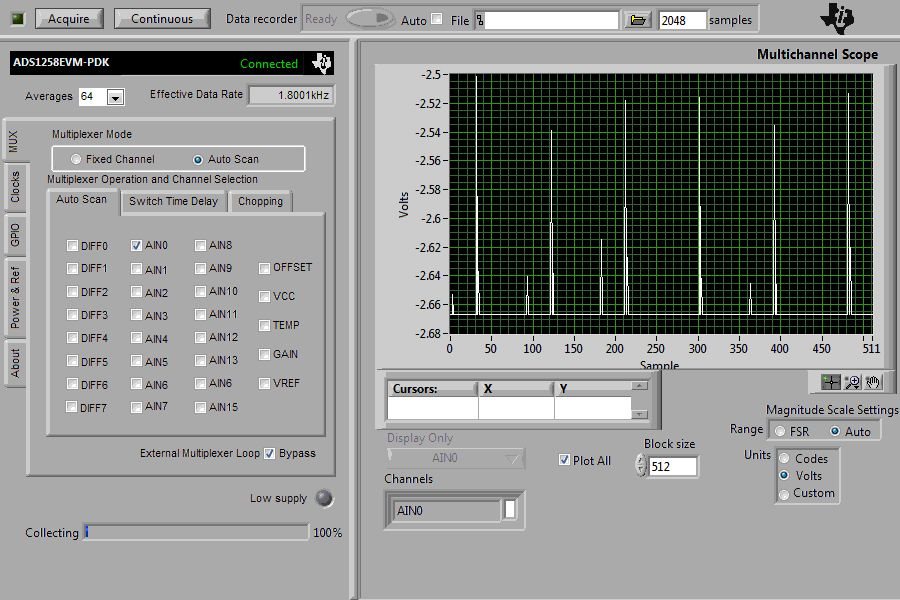Other Parts Discussed in Thread: ADS1258, INA121, INA128, ADS1278, ADS1298
Hi,
I am trying to create the ECG circuit shown here on page 9: http://www.ti.com/lit/an/sbaa160a/sbaa160a.pdf.
When I connect the analog inputs to the output from the instrument amplifier it distorts the signal. The circuit for the instrument amplifier works properly when I view the output on an oscilloscope but it becomes distorted when I add any analog output. When I try to record the data using the multiscope plugin it just looks like noise.
Are there any suggestions to fix this?
thanks,
Kaylin



